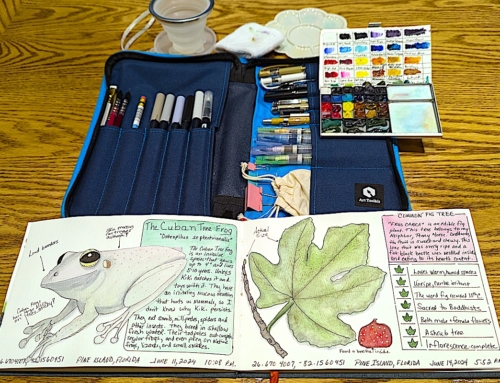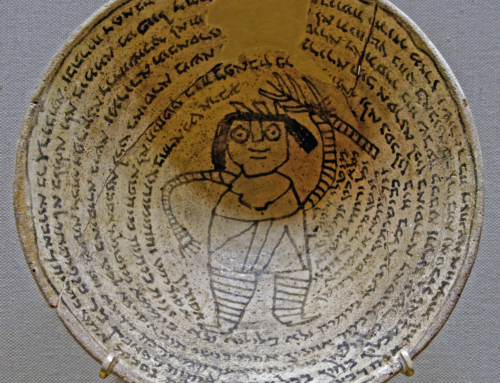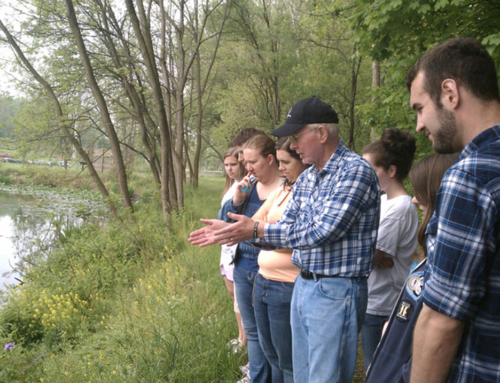DRY TORTUGAS – If you can swim – okay, if you can float – then you can snorkel and the best snorkeling in North America is at Dry Tortugas National Park, nearly 70 miles west of Key West. Its shallow waters have spectacular views and are perfect for beginners and experts.
The Dry Tortugas is a cluster of seven islands, composed of coral reefs and sand. The area is famous for its bird and marine life, and its legends of pirates and sunken gold.
Often called the “Gateway to the Gulf,” it was an important landmark to passing ships beginning with Juan Ponce de Leon who first recorded it in 1513. The Spaniards found an abundance of sea turtles or “Tortugas” using the islands as nesting grounds, and provisioned their ships with fresh meat. But the Tortugas were dry, meaning no fresh water so it was renamed “Dry Tortugas” to warn mariners of the lack of water.
The reefs and shoals of the Dry Tortugas have been a serious hazard to navigation and the site of hundreds of shipwrecks and, beginning in 1825, the United States government has maintained a lighthouse on Garden Key.

Key West’s seafaring tradition lives on at the renovated Historic Seaport district, known locally as the Key West Bight. Not only do local fishermen and visiting millionaires use this marina, but sailboat charters and ferry boats to the Dry Tortugas sail from these docks.
The U.S. military utilized its strategic location in the Florida Straits and began constructing the massive Fort Jefferson there in 1846. Like many pre-Civil War forts, it was never completed because the invention of the rifled cannon made it obsolete. This probably was a great relief to soldiers stationed there because the relentless heat and disease outbreaks (yellow fever) made it an undesirable post.
Fort Jefferson lost its military value, but the area was still admired for its unspoiled coral reefs and its plentiful sea and bird life. In 1935, President Franklin Roosevelt set aside Fort Jefferson and the surrounding waters as a national monument. In 1992, the area was designated as Dry Tortugas National Park protecting its historical and natural features.
Getting there is the hardest part of enjoying the Dry Tortugas. Once on the main island, you can visit Fort Jefferson, which offers daily 45-minute guided tours. Sport fishing is permitted but a license is required. Private boaters can visit and tie up at the park docking and picnic or camp. Bird watching is renowned and at certain times of the year the skies are raucous and noisy with nesting and mating tropical birds. Turtles still lumber onto the beach each summer to bury eggs.
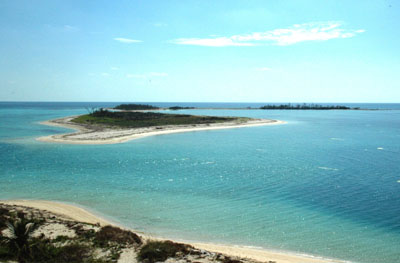
Almost 70 miles (112.9 km) west of Key West lies a cluster of seven islands, composed of coral reefs and sand, called the Dry Tortugas. Along with the surrounding shoals and waters, they make up Dry Tortugas National Park. The area is known for its famous bird and marine life, its legends of pirates and sunken gold, and its military past.
But it’s the snorkeling that is the primary attraction at the Dry Tortugas. Even the novice can enjoy the myriad of colorful tropical fish and living coral by exploring the island straight off a brilliant, white sand beach.
The water remains shallow for several yards and swimmers and snorkelers must stand in the sand, never on coral or sea grass. As a national park, regulations forbid you from taking coral, conch, lobster or ornamental fish or collecting artifacts from land or water.
In addition to viewing fish and coral, snorkelers can swim near the fort moat wall (just don’t go into the moat or stand on the wall). The fish and coral also have claimed the large limestone foundation of the fort, and some of the largest fish can be found there.
Historical artifacts also abound and, if you’re lucky, you’ll spot abandoned anchors and other pieces of machinery tossed overboard.
The park is staffed by nearly a dozen rangers and maintenance workers (and their families) who live in a casement section of the fort. Employees’ residences are off limits to the public, but there is a small visitor center and shop.
There are two modes of transportation to the Dry Tortugas – by sea and by air. There are large, fast ferries that make regularly scheduled trips to the park for about $100 per person. They also provide a refreshing picnic and snorkel gear. All you have to bring is a bathing suit, a towel and sunglasses.
If a two-hour boat ride (one way) doesn’t fill with enthusiasm, consider taking a sea plane. Although the fee is about $200 per adult for a half-day, the trip is fast (40 minutes one way), exciting and the view is spectacular. Seaplane charters, also, provide snorkel gear.
More information about the Dry Tortugas is available on the Internet at www.nps.gov/drto.
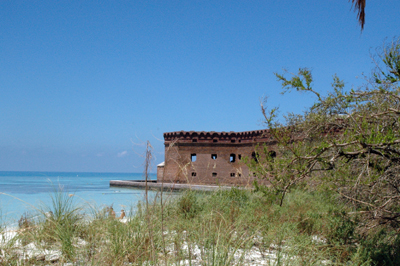
The Dry Tortugas became a military reservation in 1845 and construction on the fort began in 1846. A year later, the officer’s quarters were completed and the fort was officially named for Thomas Jefferson. The walls didn’t reach their final height of 45 feet until 1862. A moat surrounds the fort.
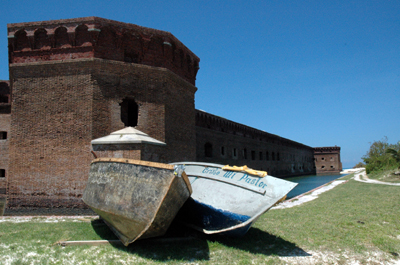
Historically, the Dry Tortugas has been a graveyard to sea-going vessels and still represents an obstacle to mariners. Here, an abandoned dingy rests on the beach next to Fort Jefferson.
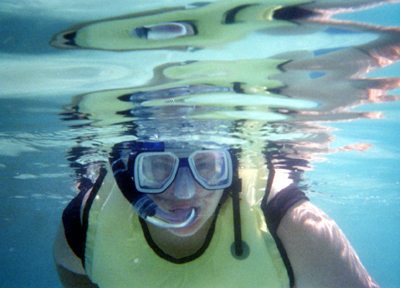
Dry Tortugas National Park protects the southwest tip of South Florida’s coral reef tract. This represents the third-largest barrier reef system outside of Australia and Belize, so be careful when snorkeling there.
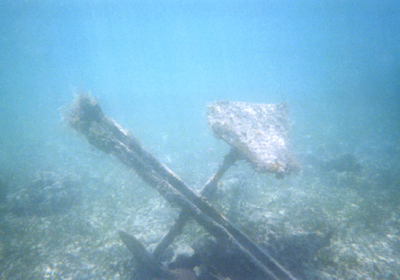
One of the benefits of snorkeling at a historic site is the “garbage” tossed overboard from ships and from the walls of Fort Jefferson. Here is a Civil War-era anchor, covered in barnacles and spanning at least 10 feet.






